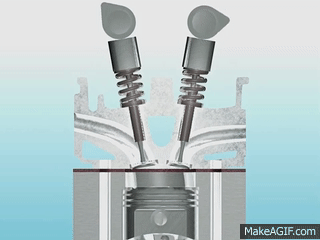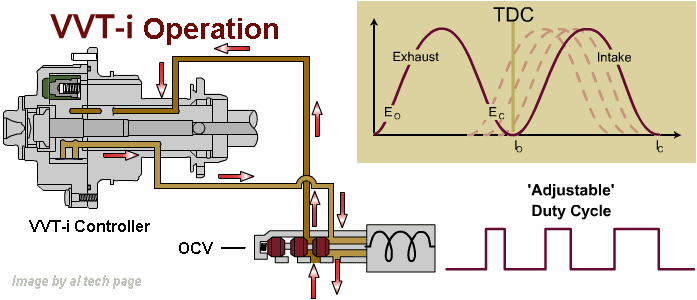Pre-arequisites: None
Background:
In automobile industry, there was a time where automobiles like cars consisted of only mechanical systems. From engine to chassis, break, transmission system, fuel system, whatever you name it, it was completely mechanical.. Even the complete car set up and machine was simple and there was no much advanced features in them. But the mechanical systems had inherent limitations and limited accuracy, which not only caused undetected failures, but also pose life threats to the consumers. So the Electronic chips were introduced in automotive systems. These electronic controllers were necessary mainly due to 4 reasons given below:
1) Vehicle and human safety: If some fault occurs in any sub system of the car, then the driver doesn't get to know until the fault leads to some bigger problem. The problems like car getting suddenly stopped in between road, or failure in break system etc. Such problems can be very dangerous to the vehicle and even to the life of its occupants. So it is necessary to detect such faults at an early stage and report it to the driver so that it can be diagnosed and fixed soon. The Electronic control units, makes it possible by diagnostics. These electronic controllers monitor the car health status continuously and indicate the driver upon occurrence of an error so that we can prevent that error causing a bigger problem in the future and thus increasing the safety.
2) Emission Legislation Norms: When the cars were completely mechanical, they were one of the significant sources of air pollution. These Petrol(Gasoline) and diesel cars would burn the fuel and emit all the air polluting by-products (like carbon monoxide, Nitrous oxides, sulfur, particulate, soot etc) into the atmosphere without precise processing of its exhaust gases. These emissions were polluting the air. So the government of various countries made laws to limit the amount of chemicals the cars were allowed to emit into the air and this limit kept getting more and more stringent with time. These are called the emission norms and the automobiles which did not comply with these norms are not given licence by the government. (Please click this link to know more about emission norms in detail).
So in order to adhere to the emission norms, we need to control the amount of the chemicals emitted by the car without affecting its quality and performance. For achieving this, various methods were invented which needed precise control over the engine functions and monitoring the amount of chemicals etc. Some of the processes for reducing emissions are exhaust gas re circulation, Variable valve timings(briefly explained at the end of this article) etc These all need sensors and actuators and algorithms to be implemented in electronic controllers. So these controllers made it possible for automobile manufacturers to adhere to emission norms.
3) Vehicle Security: When the automobiles were completely mechanical, it was very easy to hack any car and rob it. Just by finding ignition wires and triggering it would be sufficient to start the car even without having the key. Along with this, tampering with mileage, number of kilometers traveled, etc could be easily tampered with. But since the advent of electronic control units in automotive industry, the security has increased predominantly. Various cryptography algorithms are implemented into car systems and it becomes almost impossible to hack the system or rob it. A separate control unit like immobilizer prevents robbery completely and even if the car is theft, there are systems installed in it which makes it easy to trace the location of the car and get it back. Hence ECUs are necessary for vehicle security
4) Advanced Features: As you know, like all other industries, Automotive industry is also a profit-oriented business. There are so many manufacturers of car and they have to compete in the market to convince customers to buy their cars. So one way to lure the customers in is by providing various advanced features in the car at a low cost. Safety and luxury features like ABS, Adaptive cruise control, infotainment system, GPS connectivity, Cloud connection, etc makes the customers buy their cars instead of others. These advanced additional features makes the life of the driver more easy and comfortable and we need electronic control systems to realize these features. So we have Electronic control units for these like airbag ECU, ABS ECU and so on.
What are ECUs:
ECU stands for Electronic Control Unit. ECUs are the embedded systems present in the automobiles which control a electrical or electronic system with the help of sensors and actuators. These ECUs will have Micro-controllers and memory chips, communication controllers (like CAN or Flexray or SPI etc), and ASICs (Application Specific Integrated Chips) and any other resources needed for controlling its corresponding system.
These ECUs have sensors and actuators connected to it. They take the necessary input from sensors, process the data and control the system using actuators in order to get the optimum performance out of the system.
Generally an ECU looks like the image shown below:
Robert Bosch company (Gmbh) produced first ever ECU for Volkswagen car in 1967. and refined it throughout the 70s and 80s. Sports saloons such as the BMW 2002Ti/Tii popularized the concept. Now a days, even a basic low-end car has around 20-25 ECUs present in them and a high end cars will have around 150 ECUs in them. The list of most common ECUs in a car are listed below:
Generally an ECU looks like the image shown below:
Robert Bosch company (Gmbh) produced first ever ECU for Volkswagen car in 1967. and refined it throughout the 70s and 80s. Sports saloons such as the BMW 2002Ti/Tii popularized the concept. Now a days, even a basic low-end car has around 20-25 ECUs present in them and a high end cars will have around 150 ECUs in them. The list of most common ECUs in a car are listed below:
|
Abbr.
|
Full name
|
|
ABS
|
Anti-Lock Brake System
|
|
ACC
|
Adaptive Cruise Control
|
|
AFS
|
Active Front Steering
|
|
Advanced Frontlighting System
|
|
|
BCM
|
Body Control Module
|
|
Brake Control Module
|
|
|
BJB
|
Battery Junction Box
|
|
BMS
|
Battery Management System
|
|
CCM
|
Climate Control Module
|
|
CMC
|
Cell Module Controller
|
|
ECM
|
Engine Control Module
|
|
EPAS
|
Electronic Power Assisted Steering
|
|
ESC, ESP
|
Electronic Stability Control (Program)
|
|
(E)SCL
|
(Electronic) Steering Column Lock
|
|
EMS
|
Engine Management System
|
|
ESS
|
Energy Storage System
|
|
HU
|
Head Unit
|
|
SBC
|
Sensoric Brake Control
|
|
IPC
|
Instrument Panel Cluster
|
|
LSM
|
Light Switch Module
|
|
PAM
|
Park Assist Module
|
|
PDC
|
Park Distance Control
|
|
RSM
|
Rain Sensor Module
|
|
TBM
|
Trailer Brake Module
|
|
TRM
|
Trailer Module
|
|
TCS
|
Traction Control System
|
Let me explain you role of ECU with an example of Variable valve timing:
In a 4-stroke engine of a car. the inlet valve and the outlet valve were opened and closed via camshaft mechanically. This means the inlet and outlet valves were opened and closed at constant regular times, irrespective of amount of fuel intake, or air pressure, or other environmental conditions. So the degree of control we had on engine operations were very limited. This resulted in incomplete combustion of charge (fuel + air mixture) and hence more emission and unwanted wastage of fuel etc.
Many researches in automotive field showed that we can reduce emissions and save fuel if we could control the time and duration of opening and closing of these inlet and outlet valves depending on different conditions. But it was not possible to achieve with mechanical means. So ECUs made this kind of precise control possible and hence giving the benefit to the car user. Instead of camshaft lobes, solenoid actuators were positioned to control the valves. The various inputs (fuel intake, incoming air volume and pressure, engine speed etc) to understand the condition of engine were taken from various sensors and this data is given to Engine ECU. Engine ECU had the software in which the algorithm for computing the inlet and outlet valve opening and closing times and the duration for getting the optimum results was implemented. Depending on these timings a pulse signal with corresponding duty cycle was generated at output pin of ECU which was then fed to solenoid. As per this input , the solenoid actuator operated the valves. This mechanism is called as Variable valve timing (VVT) and is as shown in below diagram.
So you can see that unlike mechanical system, ECU was able to control the valves differently at different times depending on different conditions in VVT.
VVT is one of the many functions of how ECU is able to provide precise control over various systems in order to get the optimum output results and performance from the vehicle systems and sub systems. Some of such examples are Exhaust gas re-circulation, Diagnostics, Antilock Braking systems, Variable fuel injections, Exhaust treatment systems and so on. The list is endless.
Quiz Time:
Click here to take a quiz to know how much you have understood the topic
Author: Shyam P Bhat




No comments:
Post a Comment